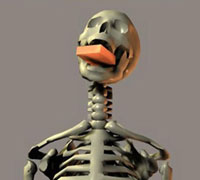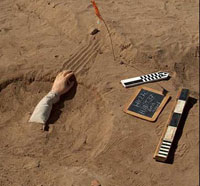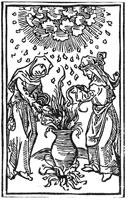
A look at the archaeology of Halloween, witches and witchcraft, creatures of the night, and ancient curses and magic
![[image]](images/Frances_Brundage_schwarze_Katze.jpg)
![[image]](images/neck_crop.jpg)
Uncanny archaeology springs from many roots. Today, Halloween—once All Hallows Eve, now All Saints Day—is a time for children to trick-or-treat costumed as super heroes, the latest characters invented by corporate marketing departments, or more traditionally as witches or ghosts. But some Halloween traditions are related to an ancient Celtic harvest festival, Samhain, and Celtic rituals, not all of them pleasant. In many past cultures the boundary between the living and the dead was thought to be shaky at times, as with Samhain. Those beings believed able to cross it—in spectral form as ghosts or as walking undead, such as vampires and zombies—were to be feared. Augustus' boyhood home was haunted according to Suetonius, the biographer of the caesars, but there is more than just written evidence for belief in the undead centuries ago, as vampire burials attest. And throughout history people have used love spells, protective charms, and curses to gain their ends. Were they successful? We don't know, but we have their voodoo dolls and lead tablets engraved with deadly appeals to supernatural forces. We also have the remains of witchy rituals, as well as evidence of counter-rituals intended to fend off attacks by witches. All of these beliefs have left a surprisingly strong—and often bizarre or gruesome—mark on the archaeological record. It's uncanny, but real archaeology. (Well, okay, the zombie attack in Predynastic Egypt article is a spoof.)
|
Halloween
Celtic Sacrifice Vampires
The Vampire of Lesbos Zombies
Zombie Attack at Hierakonpolis |
Witches
An American Witch Bottle
Fine Wine & A Piss-Poor Vintage Magic & Curses
Curse of the Stolen Cloak Curses of Caesarea
Curse of the Balsam Cookers |
Advertisement

Advertisement








.jpg)




